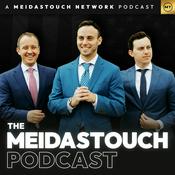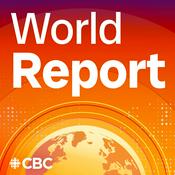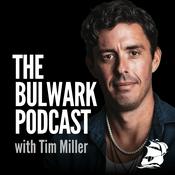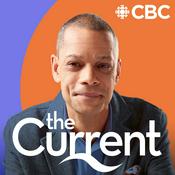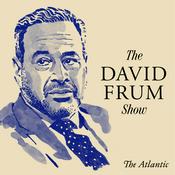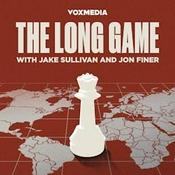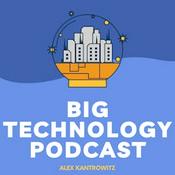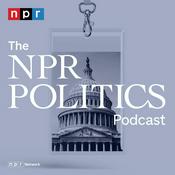619 episodes

This year’s biggest breakthrough and top news stories
2025-12-18 | 33 mins.
First up on the podcast, Online News Editor David Grimm joins host Sarah Crespi to talk about this year’s best online news stories—top performers and staff picks alike. Together they journey the scientific gamut, from bird feeders’ influence on hummingbird beak evolution to the use of “artificial spacetimes” to guide tiny robots through their environments. Next on the show, a discussion of this year’s pick for Breakthrough of the Year with producer Meagan Cantwell and News editor Greg Miller. They also touch on some other top finds from this year, including the first confirmed Denisovan skull, rice that can beat the heat, custom gene editing, and progress on xenotransplantation. This week’s episode was produced with help from Podigy. About the Science Podcast Learn more about your ad choices. Visit megaphone.fm/adchoices

Hunting asteroids from space, and talking to pollinators with heat
2025-12-11 | 27 mins.
First up on the podcast, we’ve likely only found about half the so-called city-killer asteroids (objects more than 140 meters in diameter). Freelance science journalist Robin George Andrews joins host Sarah Crespi to discuss the upcoming launch of NASA’s Near-Earth Object Surveyor, an asteroid hunter that will improve our ability to look for large objects that might crash into Earth, particularly those hiding in the Sun’s glare. Next on the show, freelancer producer Elah Feder talks with Wendy Valencia-Montoya, an organismic and evolutionary biology Ph.D. candidate at Harvard University, about heated conversations between plants and their pollinators. Her work suggests infrared radiation might be the oldest cue for animals to come hither, more ancient than color. This week’s episode was produced with help from Podigy. About the Science Podcast Learn more about your ad choices. Visit megaphone.fm/adchoices

Grappling with declining populations, and the future of quantum mechanics
2025-12-04 | 38 mins.
First up on the podcast, Science celebrates 100 years of quantum mechanics with a special issue covering the past, present, and future of the field. News Contributing Correspondent Zack Savitsky joins host Sarah Crespi to talk about a more philosophical approach to quantum physics and the mysterious measurement problem. Next on the show we have Anne Goujon, program director at the International Institute for Applied Systems Analysis in Laxenburg, Austria. She talks about her Expert Voices column on the uncertain future of demography and how the field is grappling with new theories on what happens after the global population peaks. How will different countries deal with falling populations? Will they try to reverse the trend? What are the goals going into the next century? This week’s episode was produced with help from Podigy. About the Science Podcast Learn more about your ad choices. Visit megaphone.fm/adchoices

When we’ll hit peak carbon emissions, and macaques that keep the beat
2025-11-27 | 26 mins.
First up on the podcast, when will the world hit peak carbon emissions? It’s not an easy question to answer because emissions cannot be directly measured in real time. Instead, there are proxies, satellite measures, and many, many calculations. Staff Writer Paul Voosen joins host Sarah Crespi to discuss how close we are to the top of carbon mountain and the tough road to come after the peak passes. Vani Rajendran, senior researcher in the cognitive neuroscience department at the National Autonomous University of Mexico’s Institute of Cellular Physiology, talks about macaques that can keep the beat. She explains how this intriguing ability challenges a long-standing view that animals with complex vocalizations and rhythm are inextricably linked. This week’s episode was produced with help from Podigy. About the Science Podcast Learn more about your ad choices. Visit megaphone.fm/adchoices

A headless mystery, and a deep dive on dog research
2025-11-20 | 32 mins.
First up on the podcast: the mysterious fate of Europe’s Neolithic farmers. They arrived from Anatolia around 5500 B.C.E. and began farming fertile land across Europe. Five hundred years later, their buildings, cemeteries, and pottery stopped showing up in the archaeological record, and mass graves with headless bodies started to appear across the continent. Contributing Correspondent Andrew Curry talks with host Sarah Crespi about what this strange transition might mean. Next on the show, Editor for Life Sciences Sacha Vignieri discusses recent dog research published in Science, including tracing the movement of dogs alongside ancient human populations, examining when dogs first diversified, and probing the relationship between modern dogs’ breeds and their dispositions. This week’s episode was produced with help from Podigy. About the Science Podcast Learn more about your ad choices. Visit megaphone.fm/adchoices
More News podcasts
Trending News podcasts
About Science Magazine Podcast
Listen to Science Magazine Podcast, The Bridge with Peter Mansbridge and many other podcasts from around the world with the radio.net app

Get the free radio.net app
- Stations and podcasts to bookmark
- Stream via Wi-Fi or Bluetooth
- Supports Carplay & Android Auto
- Many other app features
Get the free radio.net app
- Stations and podcasts to bookmark
- Stream via Wi-Fi or Bluetooth
- Supports Carplay & Android Auto
- Many other app features


Science Magazine Podcast
download the app,
start listening.

